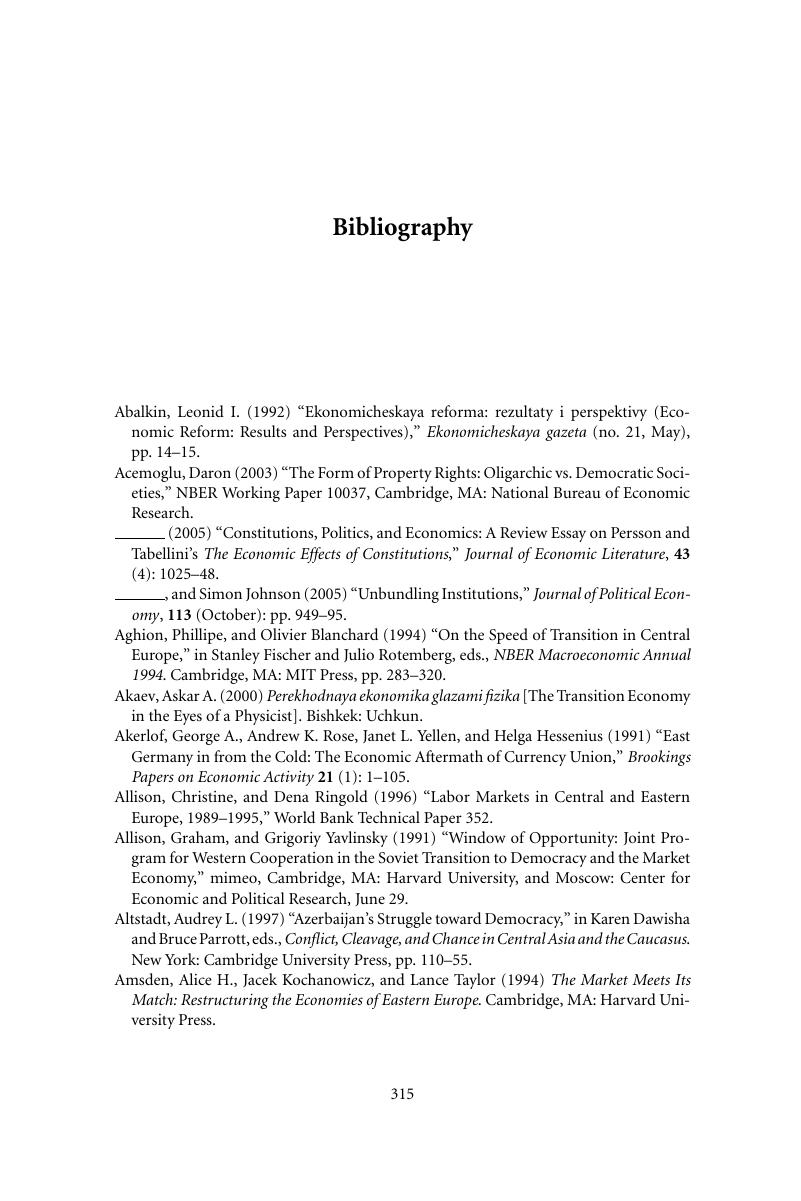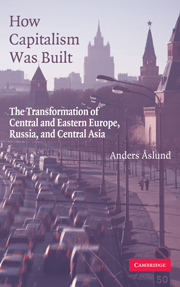Book contents
- Frontmatter
- Contents
- List of Tables and Figures
- List of Abbreviations
- Acknowledgments
- Introduction: A World Transformed
- 1 Communism and Its Demise
- 2 Shock Therapy versus Gradualism
- 3 Output: Slump and Recovery
- 4 Liberalization: The Creation of a Market Economy
- 5 From Hyperinflation to Financial Stability
- 6 Privatization: The Establishment of Private Property Rights
- 7 An Inefficient Social System
- 8 Democracy versus Authoritarianism
- 9 From Crime toward Law
- 10 The Role of Oligarchs
- 11 The Impact of the Outside World
- Conclusions: A World Transformed
- Bibliography
- Index
- References
Bibliography
Published online by Cambridge University Press: 05 September 2012
- Frontmatter
- Contents
- List of Tables and Figures
- List of Abbreviations
- Acknowledgments
- Introduction: A World Transformed
- 1 Communism and Its Demise
- 2 Shock Therapy versus Gradualism
- 3 Output: Slump and Recovery
- 4 Liberalization: The Creation of a Market Economy
- 5 From Hyperinflation to Financial Stability
- 6 Privatization: The Establishment of Private Property Rights
- 7 An Inefficient Social System
- 8 Democracy versus Authoritarianism
- 9 From Crime toward Law
- 10 The Role of Oligarchs
- 11 The Impact of the Outside World
- Conclusions: A World Transformed
- Bibliography
- Index
- References
Summary

- Type
- Chapter
- Information
- How Capitalism Was BuiltThe Transformation of Central and Eastern Europe, Russia, and Central Asia, pp. 315 - 342Publisher: Cambridge University PressPrint publication year: 2007



